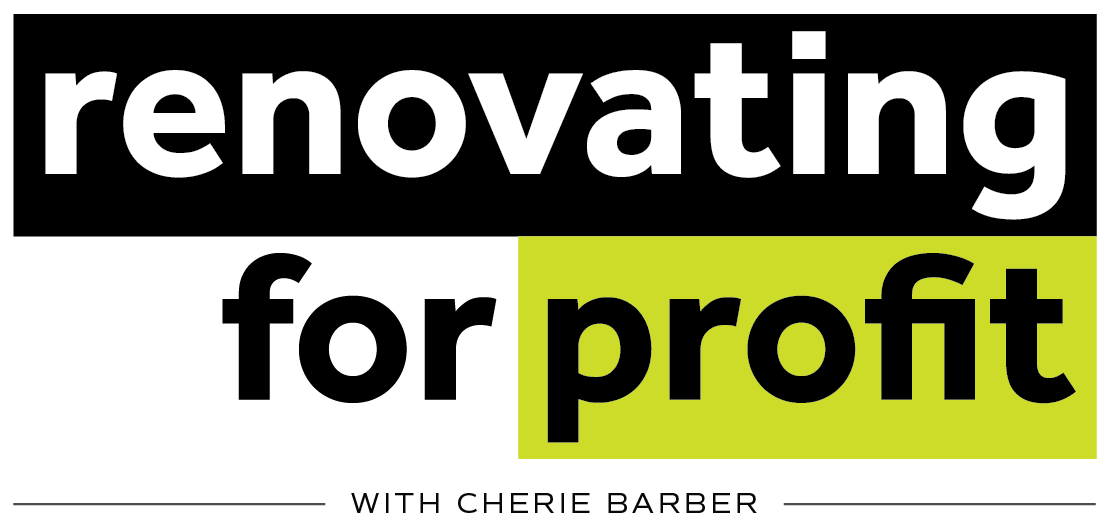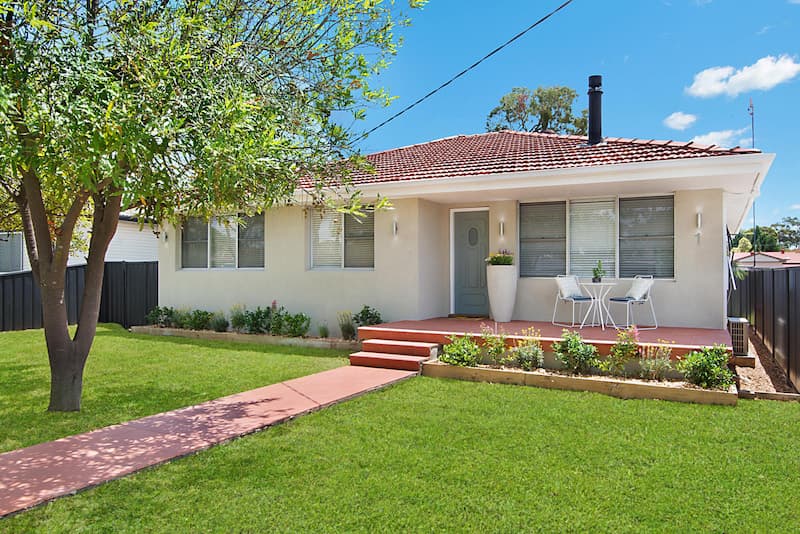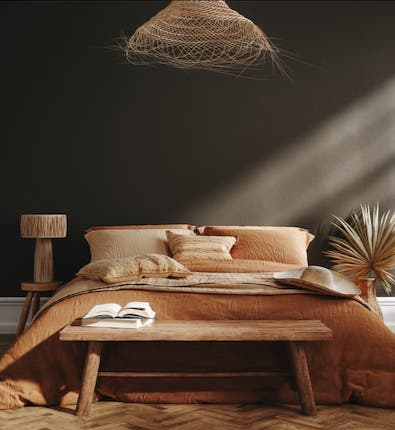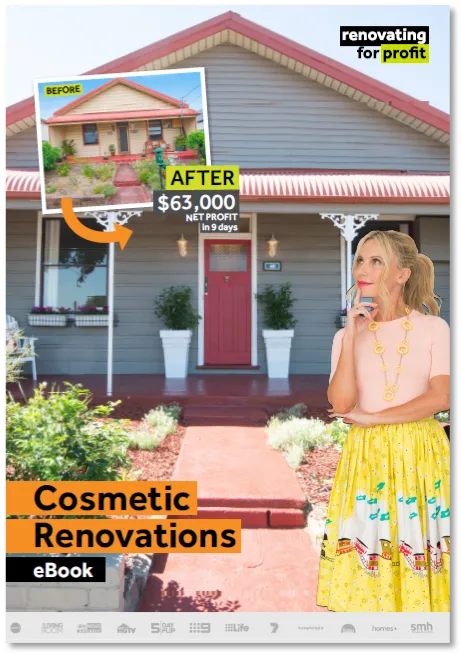Rentvesting: How To Fast Track Your Property Journey
Rentvesting: it’s a buzzword that’s been coined in recent years off the back of crazy property prices which continue to skyrocket – way outpacing salaries. It’s the strategy many cash-strapped Aussies use to get a foothold in the property market without compromising on lifestyle. It works like this: you rent where you want to live and buy an investment property where you can afford.
^ You don’t have to buy the most beautiful house on the street either, with a little elbow grease you can add value to your investment property – not only bumping up your rental return but also your equity and property value.
It’s a great way to kickstart a property portfolio without sacrificing on lifestyle. Don’t think you have to buy a prized property though – an ugly duckling can easily be turned into a swan with quick cosmetic updates. Not that you have to do that straight away either if you need to save more cash, but when you eventually do… instant equity! Check out my Cosmetics Renovations For Profit course if you want to learn more about how to do that smartly. It’s everything I’ve learnt over the years renovating 150+ properties and I put it together so you don’t have to make the same stuff-ups I did!
Back back to rentvesting – what are the pros and cons? And would this work for you? Let’s dig a little deeper.
A MEANS TO AN END
Rentvesting doesn’t have to be a long-term strategy, it can just be a way to eventually buy your own dream home in an area you want. Or, you can leverage that first property to accumulate more to rent out – it’s really up to you.
^ Updating a tired kitchen or dated bathroom – like those seen in many Aussie homes in suburbs all over the country – doesn’t have to cost a fortune, and by learning where to spend and save it’ll pay dividends in the long-run.
One benefit to rentvesting is often times the deposit required will be much smaller. For example, if you’ve scraped together a deposit of $100,000 but live in a suburb where the median price of houses is $1 million, then clearly you’re priced out of that suburb – and probably the surrounding ones too. It’s going to take you a decade of saving to even get close.
Shift your buying focus to a capital-growth area where there’s a more affordable median price, say $400,000 for example, and you’ll be sitting pretty. Hone your research and find a gem that only needs a cosmetic spruce-up to add value and BINGO – you’re now on the property ladder.
Once you accrue decent equity in your investment property and it increases in value, then you have a solid foothold in the property market to springboard straight into your very next property investment. You’ve enjoyed the freedom of renting, while also making good money from your property investment – you’re in the race!
YOU’LL FREE UP YOUR CASHFLOW
Let’s say your dream “first home” requires mortgage repayments of $4,000 a month and that would be a stretch on your salary, and the banks won’t lend you that kind of money anyway. But if you rent a home in the same area, rental payments could be $2,200 a month, leaving you with $1,800 per month (if you had that to still to spare) to invest elsewhere or put towards a deposit.
You also can’t forget about the first home buyer government incentives you can take advantage of to give you a financial leg-up. Use the money to buy a modest property somewhere you can afford, and provided you’ve bought smartly in the right areas and the right property, you can cash it in down the track and buy your own home. You’ve made the Aussie dream come true by rentvesting.
https://www.pinterest.com.au/pin/271482683761560350/
^ Be open-minded when buying a property to rent out. You won’t be living there so it doesn’t have to feel like home to you. That said, updating the key areas of the home will mean you’ll be able to charge a higher rental amount.
A WAY TO BUILD A PORTFOLIO
You might be perfectly happy renting as a long-term option and decide to invest in property as a long-term retirement plan.
By taking the emotion out of your purchase decisions, you’re more likely to make a smart investment decision. Throw your net (and research) wide, and you’ll discover fantastic opportunities for investment properties in pockets everywhere. You’re now not limited by the comfort zone and emotional importance of buying a home. You’re embarking on the buy, renovate and hold strategy, with the aim of leveraging equity to progressively buy more properties. By the time you retire, you’ll have a nice portfolio of properties that kicked off with rentvesting.
THE VERDICT
The notion that “rent money is dead money” is a thing of the past. Think of it as a smart investment strategy that allows you to crack into a difficult property market at a price you can afford. You can buy sooner (renovate now or later) and kickstart your journey to financial freedom.
This article was first published in January 2020 and updated for comprehensiveness.






Great post! This is what my daughter is aiming for right now. We were with the bank manager applying for an investment property home loan. We crunched the numbers and figured that if she could hang out at home a bit longer (6-12 months) whilst purchasing an investment property with an already existing tenant who wants to stay in the property, and then topping up the repayments with the same amount as the rental she would show a fantastic history of savings whilst quickly reducing the principal on the investment property so it will be a positive cash flow property asap. By helping her bring the property up to positive cash flow status from the day of settlement (gift deposit) she can get her next property sooner also with such a good record. Our bank manager thinks she has her head on straight too!
I have been to a couple of your talks Cherie – one in Melbourne at the Sofitel and I took my daughter to hear you at the Grand Chancellor in Hobart. We live in Penguin on the North West Coast.
Hi Bron – so happy for your daughter. You must be so proud and good on her for starting in property so early on in her young life! Makes me happy. C x
What would be the minimum house price to develop leverage equity? Youve mentioned a $400000 home what about a house around $200000 investment property in a regional area? Would banks still value that as good equity?
Hi Fi – you can start in property at any price and leverage equity. Just keep in mind that the lower your purchase price, the lower your equity. When renovating for profit, everything is percentages relative to your purchase price. I’ve got a lot of students who buy lower price properties in regional areas to get a foot up into the property ladder. C x
Hi Cherie,
I am in the process of doing your course and I’m loving it so far.
Just a question on this subject. We live in a 6 bedroom home and it is now time for us to downsize. We live in a very family-friendly area and not many homes come on the market here and we would prefer to not sell. We would love to live near the beach but just can’t afford to right now.
Is it best for us to rent our home out and rent a smaller place for us near the beach while saving more money and hopefully be able to buy our first investment property?
Thank you, am loving your blog too 🙂
Sandra
Hi Sandra, so glad to hear you’re enjoying the course, thank you. If you prefer not to sell, keep your home as an investment property instead, especially if you think the suburb is going to continue to grow in capital growth. Downsizing & renting closer to the beach will make you happy and that’s something. But I really want you to do Step 1B of the course and speak to a finance broker to determine what your lending capacity will be, before you make any of these changes. If you haven’t got a good finance broker, call RFP HQ on (02) 9555 5010 and we’ll give a good contact who looks after lots of RFP students nationally. C x
Thanks for sharing such informative information, great blog post.